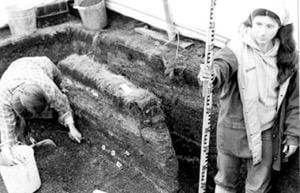Burns Bog was used extensively by indigenous peoples for thousands of years, including the Tsawwassen First Nation, Semiahmoo First Nation, Stó:lō Nation, Katzie First Nation and Musqueam Indian Band.
The bog produces an abundant supply of blackberries, blueberries, cranberries and salal berries, and would have been an important source of food for people in the region. There are many medicinal plants in Burns Bog, such as Labrador tea, western bog-laurel, sundew, and Sphagnum moss. Hunting was also common in Burns Bog, particularly for Black Bears, Black-tailed Deer, elk, and perhaps ducks.
During the Burns Bog Ecosystem Review (2000), the Tsawwassen, Semiahmoo and Sto:lo peoples indicated that Burns Bog is extremely important in terms of cultural, archaeological, traditional and current uses. These groups also indicated that conservation of the Burns Bog area is important to them. Several First Nations highlighted the importance of conducting an archaeological assessment of the Burns Bog area.
The oldest known archaeological site near Burns Bog is called Glenrose, after the Glenrose cannery. The site is located under the Alex Fraser Bridge in North Delta, and is estimated to be 4,500 years old.
More recently, seven local First Nations were partners in developing the səw̓q̓ʷeqsən Place of Learning and Recognition Area, at the south footing of the Alex Fraser Bridge. This area is the location of an ancestral village and cemetery, also known as the St. Mungo Cannery archaeological site. The Place of Learning and Recognition Area provides art and interpretive information displays, as well as a series of lookouts along a scenic trail.

